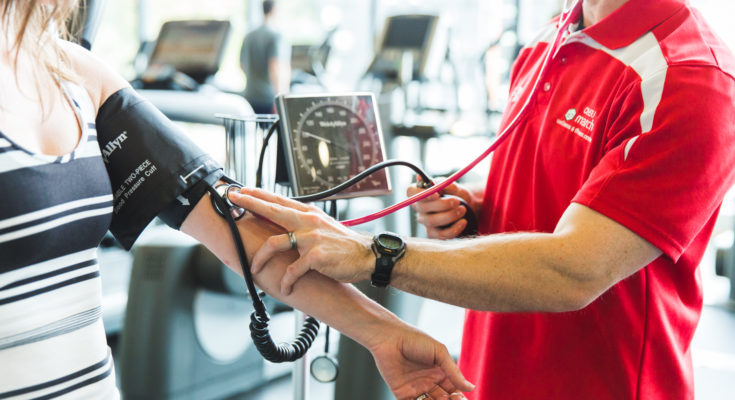Most people are aware that keeping fit can benefit the heart, keep extra pounds at bay, and strengthen our muscles. New research is discovering further health benefits all the time.
Recently, age-related rises in blood pressure were put under the microscope. Now personally speaking, I’ve always tended to have blood pressure below the average (causing occasional dizziness when I stand up), but for many of us, especially men, blood pressure tends to rise with age independently of any weight gain.
Men who are largely sedentary often develop the early signs of high blood pressure in their mid-40s, but the blood pressure of men with strong cardio-fitness doesn’t become high till their mid-50s on average.
Normal resting blood pressure is defined as 100 to 140 mmHg systolic (maximum pressure) and 60 to 90 mmHg diastolic (minimum pressure). High blood pressure, or hypertension, is above 140 mmHg systolic and 90 diastolic mmHg.
Although hypertension doesn’t usually trigger symptoms, over the long-term it can really raise the risk of heart disease, coronary artery disease, and stroke, among other conditions.
Dr Junxiu Liu and his team at the University of South Carolina, USA, have found in a study of 13,953 men followed for 36 years that those with higher fitness levels “experience a delay in the development of hypertension when compared to those with lower fitness levels”.
He says: “We now know that a man’s hypertension development may be delayed by improving his fitness levels. In other words, men with higher fitness levels experienced normal systolic blood pressure increases later in life than those with low fitness levels. Our results underscore the importance for a man to increase his regular physical activity to prevent his natural, ageing-related rise in blood pressure.”
The team recommend that, in order to move out of the “low fit” category, men need to do at least 150 minutes of moderate-intensity physical activity such as brisk walking, jogging, running, etc. each week.




